CHARLIE PARKER
One of the major progenitors of bebop, Charlie "Bird" Parker is hailed by some as the best jazz saxophonist ever, and with good reason. An astonishing improviser, Bird could effortlessly weave his way through complex changes at breakneck speeds like on "Kim," or he could lay back somewhat and play gorgeously on ballads like "Lover Man," which Charles Mingus considered to be among one of Parker's greatest recordings, or the mid-tempo "Just Friends" from his exceptional Charlie Parker With Strings album. Parker was a master of the highest order.Charlie Parker - Charlie Parker Story
The Great CHARLIE PARKER Playlist
Charles Parker, Jr. (August 29, 1920 – March 12, 1955), also known as "Yardbird" and "Bird", was an American jazz saxophonist and composer.
Parker was a highly influential jazz soloist and a leading figure in the development of bebop, a form of jazz characterized by fast tempos, virtuosic technique and improvisation. Parker introduced revolutionary harmonic ideas including rapid passing chords, new variants of altered chords, and chord substitutions. His tone ranged from clean and penetrating to sweet and somber. Parker acquired the nickname "Yardbird" early in his career;[3] this and its shortened form, "Bird", which continued to be used for the rest of his life, inspired the titles of a number of Parker compositions, such as "Yardbird Suite", "Ornithology", "Bird Gets the Worm", and "Bird of Paradise". Parker was an icon for the hipster subculture and later the Beat Generation, personifying the jazz musician as an uncompromising artist and intellectual rather than just an entertainer.
Charles Parker, Jr. was born in Kansas City, Kansas, and raised in Kansas City, Missouri, the only child of Adelaide "Addie" (Bailey) and Charles Parker. He attended Lincoln High School in September 1934, but withdrew in December 1935, just before joining the local musicians' union.[why?]
Parker began playing the saxophone at age 11, and at age 14 he joined his school's band using a rented school instrument. His father, Charles, was often absent but provided some musical influence; he was a pianist, dancer and singer on the T.O.B.A. circuit. He later became a Pullman waiter or chef on the railways. Parker's mother Addie worked nights at the local Western Union office. His biggest influence at that time was a young trombone player who taught him the basics of improvisation.
In the late 1930s Parker began to practice diligently. During this period he mastered improvisation and developed some of the ideas that led to bebop. In an interview with Paul Desmond, he said that he spent three to four years practicing up to 15 hours a day.
Bands led by Count Basie and Bennie Moten certainly influenced Parker. He played with local bands in jazz clubs around Kansas City, Missouri, where he perfected his technique, with the assistance of Buster Smith, whose dynamic transitions to double and triple time influenced Parker's developing style.
In 1938, Parker joined pianist Jay McShann's territory band. The band toured nightclubs and other venues of the southwest, as well as Chicago and New York City. Parker made his professional recording debut with McShann's band.
As a teenager, Parker developed a morphine addiction while hospitalized after an automobile accident, and subsequently became addicted to heroin. He continued using heroin throughout his life, which ultimately contributed to his death.
The bebop legend drove jazz into territories that continue to awe listeners with ears fast enough to keep up. The first volume of veteran critic Stanley Crouch’s decades-in-the-making Charlie Parker biography gets to the heart of Bird’s genius, but the book will test your patience, says Stuart Klawans.
The veteran jazz writer Stanley Crouch has a store of fresh information for you in his new book about Charlie Parker (1920–55), the genius of American music universally known as Bird, and invaluable insights to offer into the meaning of Parker’s achievement. It is imperative that you come into possession of this material, contained in Kansas City Lightning: The Rise and Times of Charlie Parker—even though, to get at it, you will sometimes feel as if you’re swimming through a vat of Jell-O laced with industrial sludge.
There is an excuse for the ordeal, maybe. Solid documentation and reliable first-person accounts about Bird simply do not exist for major portions of the period covered in this book, the first of two volumes, which takes you from Parker’s birth in Kansas City through his career breakthrough at New York’s Savoy Ballroom, with Jay McShann’s band, in February 1942. Crouch, who is one of the most knowledgeable people in the bebop business, did years of research to fill in the blanks, gaining candid testimonies from a host of people who knew the young Parker, including his first wife, Rebecca Ruffin. It seems likely to me that these witnesses entrusted Crouch with confidences that they might have withheld from other writers.
Still, as Crouch is the first to say, this is a life story full of gaps. And so, to compensate for the missing information, Crouch has relied on an imagination that might be called novelistic, if novelists dealt in generic supposition and platitudinous bombast.
William "Biddy" Fleet, an obscure guitarist with whom Parker shared experiments in music after his arrival in New York in 1938, while still in his teens and groping his way towards his own style and a new conception of what jazz might become. "The thing I loved about Bird (Parker)," Fleet tells the author, "is this: he wasn't one of those who's got to write something down, go home, study on it, and the next time we meet, we'll try it out. Anything anyone did that Bird liked, when he found out what it was, he'd do it right away. Instantly. Only once on everything."
From 1935 to 1939, Parker worked in Kansas City with several local jazz and blues bands from which he developed his art. In 1939, Parker visited New York for the first time, and he stayed for nearly a year working as a professional musician and often participating in jam sessions. The New York atmosphere greatly influenced Parker's musical style.
In 1938, Parker joined the band of pianist Jay McShann, with whom he toured around Southwest Chicago and New York. A year later, Parker traveled to Chicago and was a regular performer at a club on 55th street. Parker soon moved to New York. He washed dishes at a local food place where he met guitarist Biddy Fleet, the man who taught him about instrumental harmony. Shortly afterwards, Parker returned to Kansas City to attend his father’s funeral. Once there, he joined Harlan Leonard’s Rockets and stayed for five months. In 1939, Yardbird rejoined McShann and was placed in charge of the reed section. Then, in 1940, Parker made his first recording with the McShann orchestra.
During the four years that Parker stayed with McShann's band, he got the opportunity to perform solo in several of their recordings, such as Hootie Blues, Sepian Bounce, and the 1941 hit Confessing the Blues. In 1942, while on tour with McShann, Parker performed in jam sessions at Monroe’s and Minton’s Playhouse in Harlem. There he caught the attention of up-and-coming jazz artists like Dizzy Gillespie and Thelonious Monk. Later that year, Parker broke with McShann and joined Earl Hines for eight months.
The year 1945 was extremely important for Parker. During that time he led his own group in New York and also worked with Gillespie in several ensembles. In December, Parker and Gillespie took their music to Hollywood on a six-week nightclub tour. Parker continued to perform in Los Angeles until June 1946, when he suffered a nervous breakdown and was confined at a state hospital. After his release in January 1947, Parker returned to New York and formed a quintet that performed some of his most famous tunes.
From 1947 to 1951, Parker worked in a number of nightclubs, radio studios, and other venues performing solo or with the accompaniment of other musicians. During this time, he visited Europe where he was cheered by devoted fans and did numerous recordings. March 5, 1955, was Parker’s last public engagement at Birdland, a nightclub in New York that was named in his honor. He died a week later in a friend’s apartment.
Charlie Parker Interview
Celebrating Bird The Triumph of Charlie Parker
Charlie Parker - The Original Bird ( Savoy 1944-49 - Vinyl




































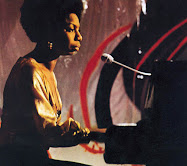

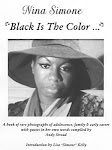
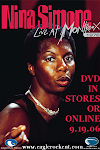
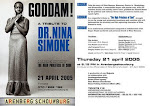

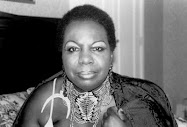






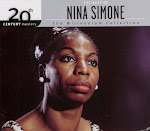



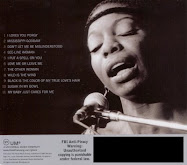
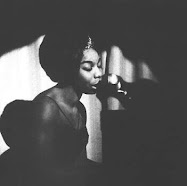

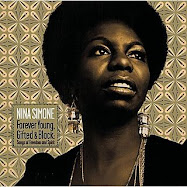









No comments:
Post a Comment